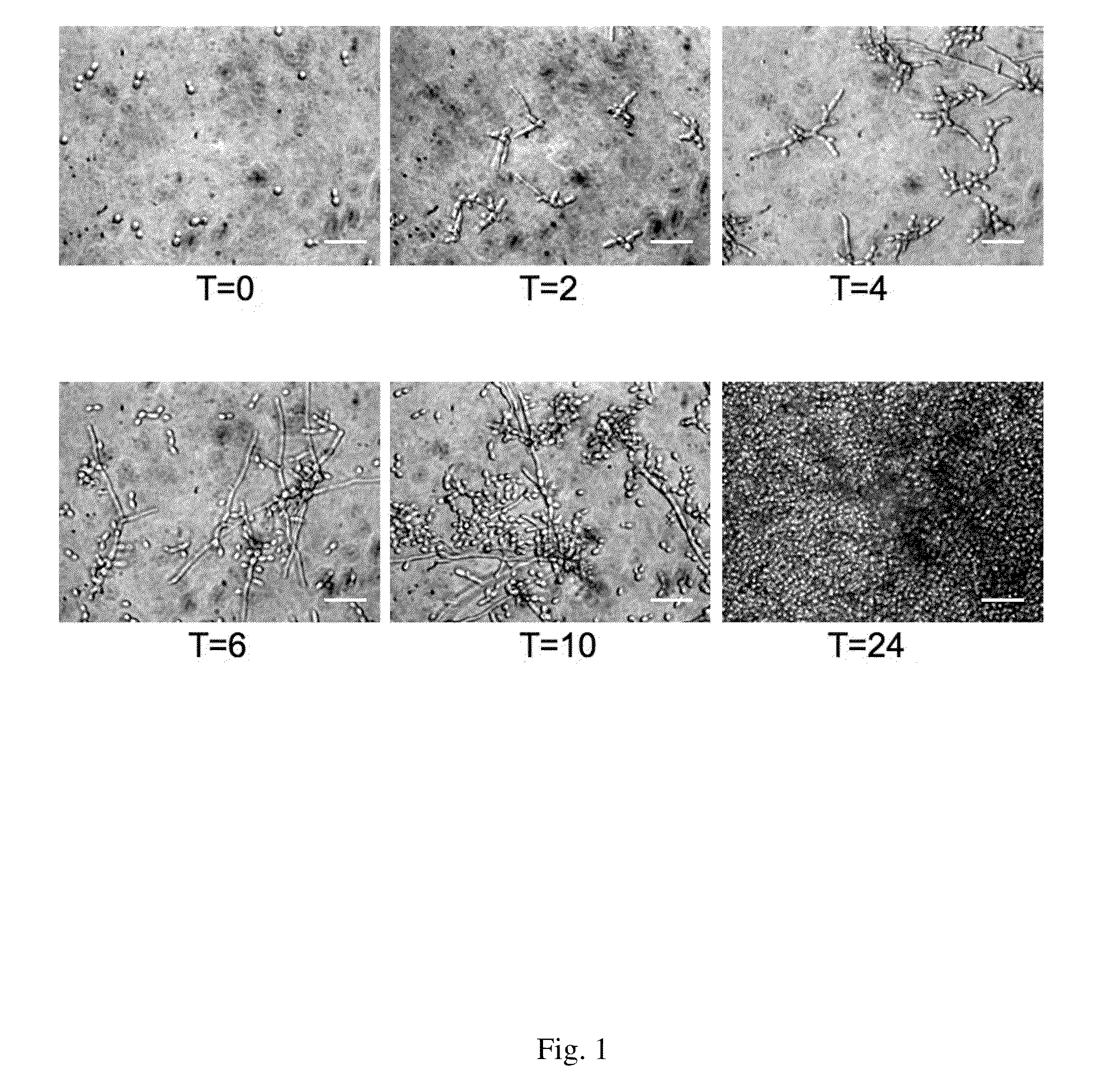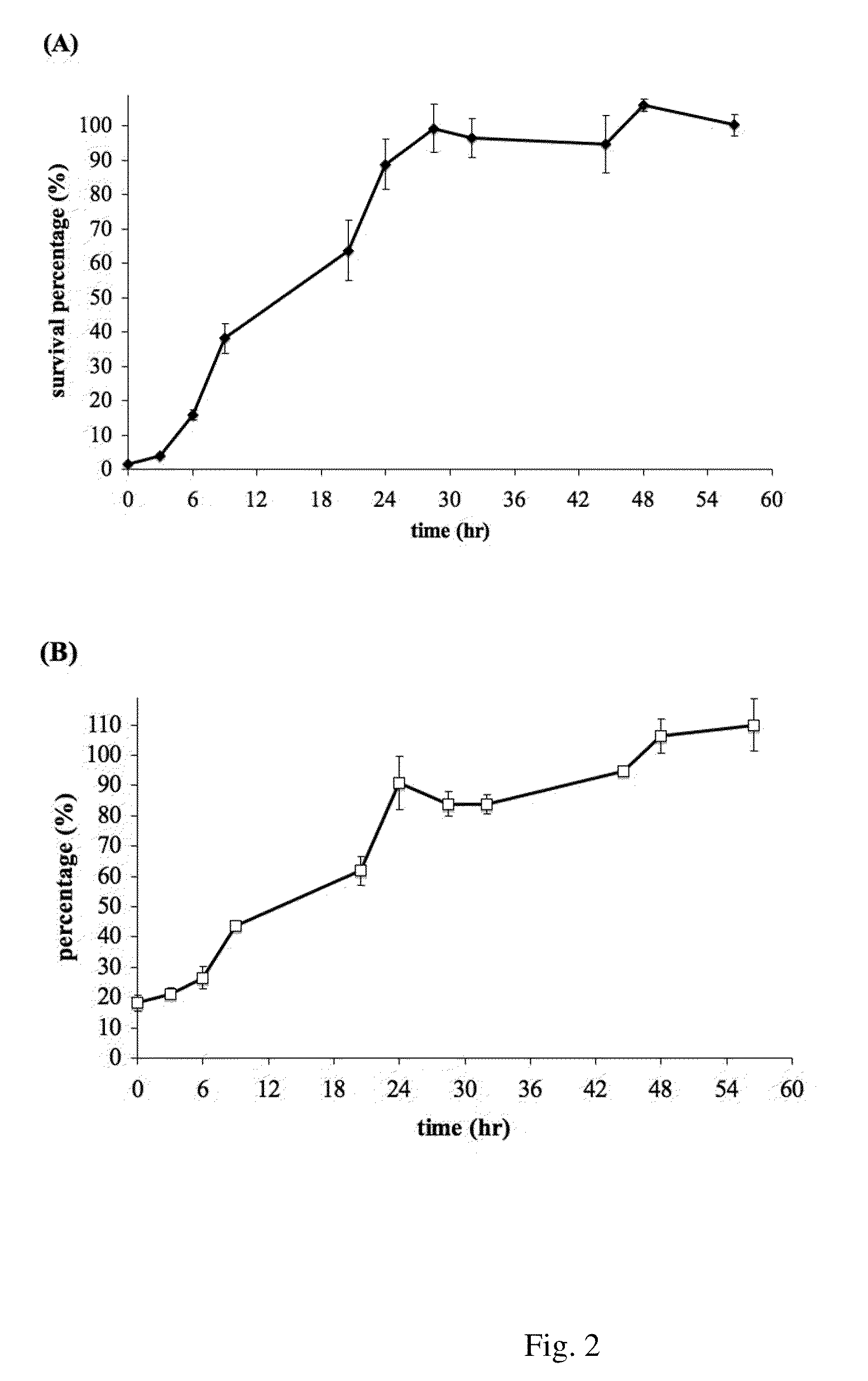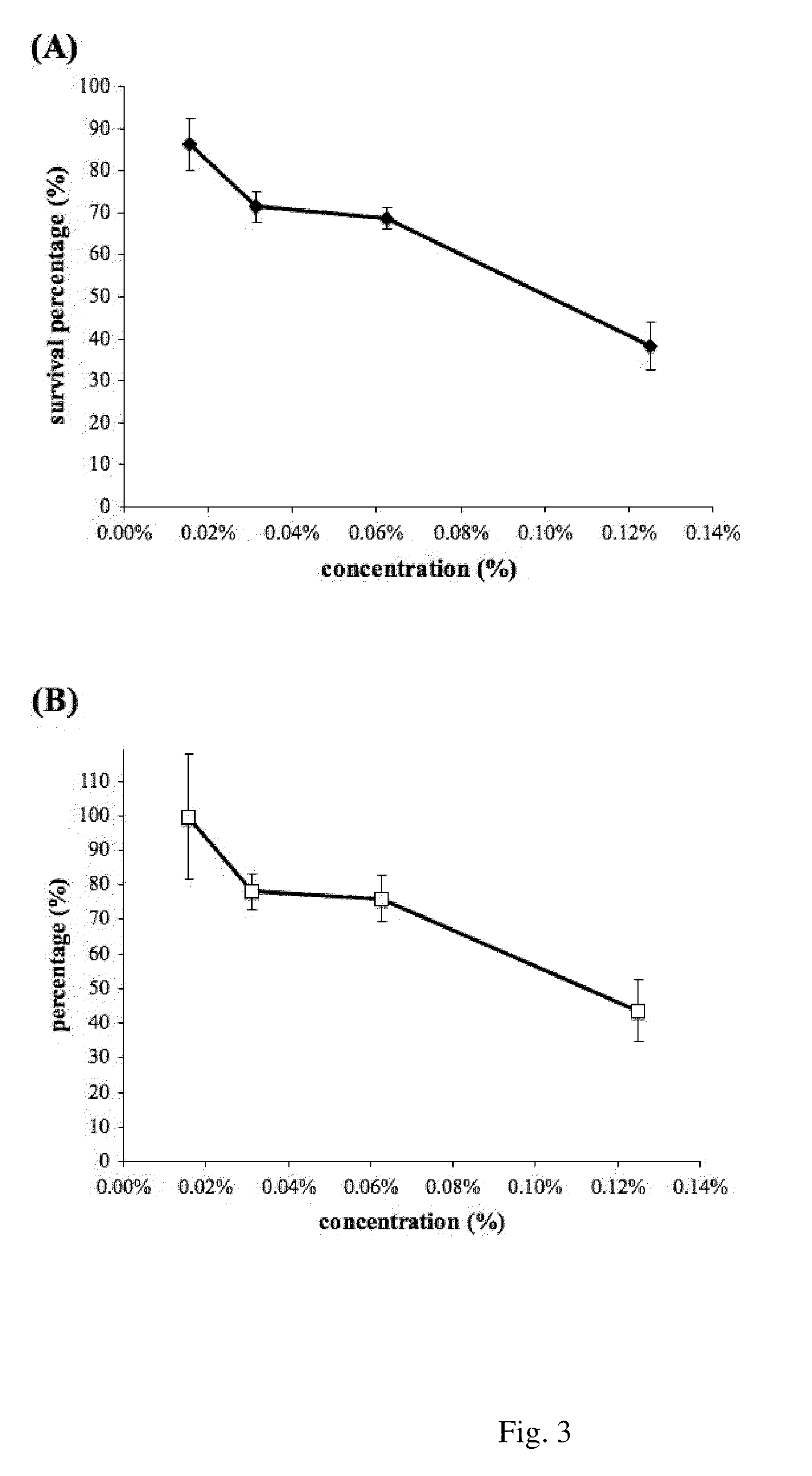Use of Methyl Cinnamate in the Inhibition of Candida Albicans Biofilms
a technology of methyl cinnamate and biofilm, which is applied in the direction of biocide, drug composition, animal husbandry, etc., can solve the problems of high mortality of device-associated infections, difficult chemotherapeutic treatment of biofilms, and difficult reduction or elimination of individual bacteria, so as to inhibit or prevent biofilm formation
- Summary
- Abstract
- Description
- Claims
- Application Information
AI Technical Summary
Benefits of technology
Problems solved by technology
Method used
Image
Examples
example 1
Development of Biofilms of Candida albicans
[0025]A single colony of Candida albicans was selected from YPD plate (1% (w / v) yeast extract, 2% (w / v) peptone, 2% (w / v) dextrose and 1.5% (w / v) agar), seeded in YPD liquid medium (1% (w / v) yeast extract, 2% (w / v) peptone and 2% (w / v) dextrose) and then cultured at 30° C. and 100 rpm for 16 hours. The YPD medium was washed out and the amounts of the Candida albicans cells were counted using Hematocyte Counter. The cells were diluted with RPMI 1640 medium (Gibco, Invitroge, Calif., U.S.A.) to 5×105 cells / ml. 200 μL of 5×105 cells / ml medium were added to 96-well plate and placed at 37° C. for 1 hour so that the cells could adhere to the bottom of the plate. The non-adhered cells were washed out with phosphate buffer. The material of the 96-well plate was polystyrene, which is a common material for medical device such as syringe. Subsequently, RPMI 1640 medium was added to the plate and cultured at 37° C. To remove the planketic cells, PBS w...
example 2
Minimum Inhibition Concentrations (MIC) and Minimum Fungicidal Concentrations (MFC) of Methyl Cinnamate and Essential Oil of Zanthoxylum armatum Against Candida albicans
MIC Assay
[0030]A single colony of Candida albicans was selected from YPD plate, seeded in YPD liquid medium and then cultured at 30° C. and 100 rpm for 16 hours. The medium was diluted to 1×105 CFU / ml. The diluted medium was added to 96-well plates containing different concentrations of methyl cinnamate and essential oil of Zanthoxylum armatum (0.00625% to 1% for methyl cinnamate and 0.025% to 0.5% for essential oil) and cultured at 37° C. for 16 hours. It was found that the MIC of methyl cinnamate was 0.1% and that of essential oil of Zanthoxylum armatum was 0.15%.
MFC Assay
[0031]A single colony of Candida albicans was selected from YPD plate, seeded in YPD liquid medium and then cultured at 30° C. and 100 rpm for 16 hours. The medium was diluted to 1×105 CFU / ml. The diluted medium was added to 96-well plates contai...
example 3
Inhibition of Biofilm of Candida albicans with Methyl Cinnamate and Essential Oil of Zanthoxylum Armatum
[0032]After the cells of Candida albicans were cultured at 37° C. for 1 hour, they adhered to the 96-well plate made with polystyrene material. After continuous culture at 37° C. for 4 hours, various concentrations of methyl cinnamate and essential oil of Zanthoxylum armatum were added to the plate and cultured with the cells at 37° C. to 48 hours, and the numbers of the viable cells and their biomass were determined by XTT (FIGS. 3a and 4a) and CV (FIGS. 3b and 4b) assays, respectively. 1% methanol was used as control. FIGS. 3 and 4 show the inhibition of biofilm of Candida albicans with methyl cinnamate and essential oil of Zanthoxylum armatum, respectively. 10 to 60% of biofilm was inhibited by the concentration ranging from 0.015% to 0.125% of methyl cinnamate. Around 50% and 70% of biofilm can be inhibited by 0.03% and 0.06% essential oil of Zanthoxylum armatum, respectively...
PUM
| Property | Measurement | Unit |
|---|---|---|
| time | aaaaa | aaaaa |
| time | aaaaa | aaaaa |
| structural heterogeneity | aaaaa | aaaaa |
Abstract
Description
Claims
Application Information
 Login to View More
Login to View More - R&D
- Intellectual Property
- Life Sciences
- Materials
- Tech Scout
- Unparalleled Data Quality
- Higher Quality Content
- 60% Fewer Hallucinations
Browse by: Latest US Patents, China's latest patents, Technical Efficacy Thesaurus, Application Domain, Technology Topic, Popular Technical Reports.
© 2025 PatSnap. All rights reserved.Legal|Privacy policy|Modern Slavery Act Transparency Statement|Sitemap|About US| Contact US: help@patsnap.com



